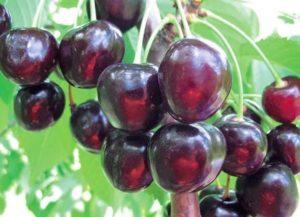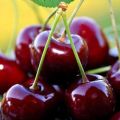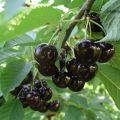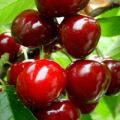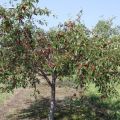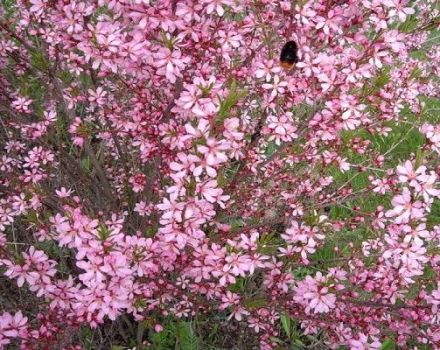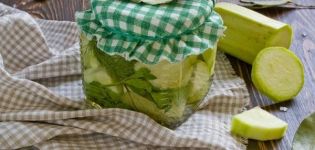Description and pollinators of the Revna cherry variety, cultivation and care
Among fruit trees, cherries of the Revna variety are especially popular. For a long time, it grew exclusively in areas with a warm climate, since it is capricious in care and does not tolerate a lack of light and heat. It was for the purpose of cultivating it in other areas that scientists bred varieties with special properties.
General information about the variety
This variety was bred with the help of another species - Bryansk pink cherry. Jevna has embodied the best qualities of the maternal variety:
- The height of a mature tree is just under 4 meters. It has a pyramidal shape. Jealous is prone to intensive growth of shoots. Cherry leaves are dense, on a short handle.
- Fruits are medium in size, on average a little over 4 g each. They have a dark burgundy, almost black shade. The pulp is sweet, with a strong pleasant aroma.
- Begins to bear fruit in the fifth year of being in the open field, and in sufficient volume - only by the tenth year of life.
Advantages and disadvantages of Revna cherries
Cherry Revna is perfect for growing in central Russia. The variety has good frost resistance, which allows it to be cultivated in regions with a temperate climate.Due to its late flowering, this cherry variety is less susceptible to damage than others during spring frosts.For such trees, the sun's rays are not dangerous in excess.
The advantages of sweet cherries also include stable yields and resistance to most fungal diseases.
Fruits do not crack, retain good shape and high taste for a long time. They tolerate transportation without damage, including over long distances. Color and taste are preserved up to 2 weeks when assembled at 0 degrees.
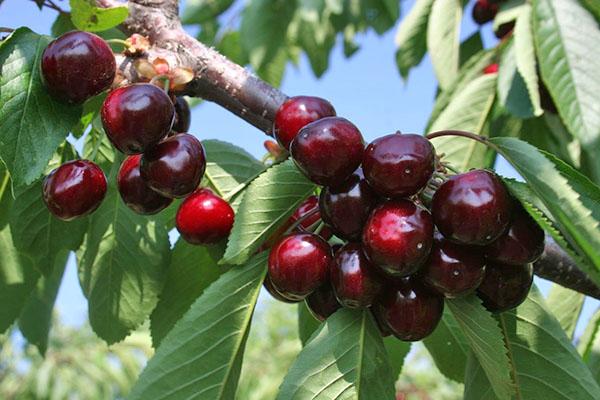
Suitable for raw consumption, as well as for freezing and preparing blanks. Blanks from this variety are tasty and sweet even with a small amount of sugar, since there is a lot of it in the fruits themselves.
The specifics of growing a tree
Jealous has some features to consider when planting and nursing. Sweet cherries do not tolerate poor lighting, strong drafts, and the proximity of groundwater.
How to choose a seat
This variety needs a sufficient amount of light, so the place for planting cherries should be well lit. The tree grows well on loam and sandy loam. The acidity level of the soil should be neutral.
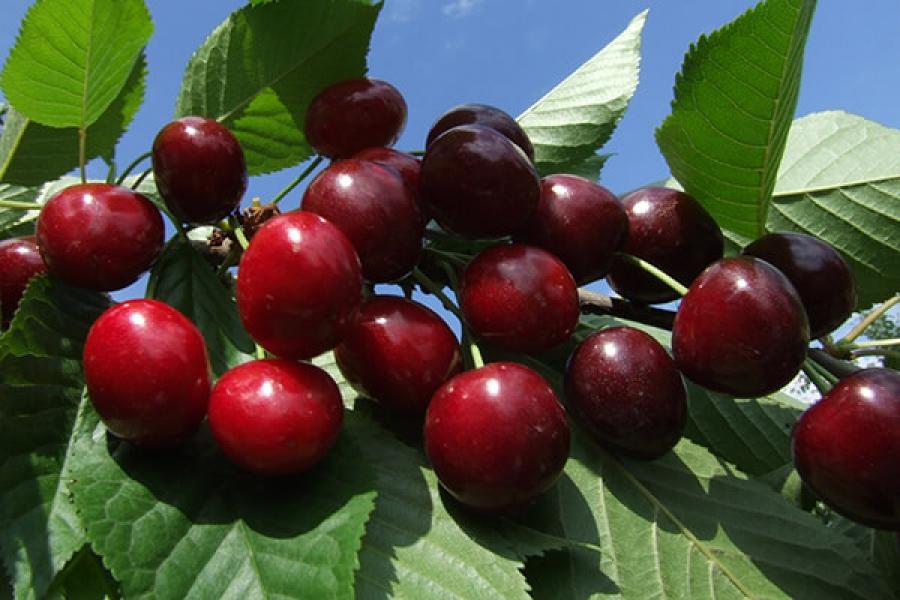
Cherry Revna, like other varieties, prefers to grow on a small hill. There should also be no strong drafts.
Soil preparation
If the acidity of the soil is increased, then liming is carried out. From 600 to 800 g of lime is added per 1 square meter, it is evenly scattered around the tree, then the earth is dug up. The first time this procedure is carried out 6 months before planting seedlings in the ground. It promotes better exchange of water and air in the soil. When liming, it is impossible to simultaneously fertilize the plant with products containing nitrogen.
Sapling selection
The tree should have several strong shoots and a well-formed root system. There should be no visible damage on it.

If the seedling is not planted in the ground immediately, or if it is to be transported, then the roots of the plant must be wrapped in a damp cloth.
Landing
It is preferable to plant cherries in the spring, in the second decade of April. The air temperature must be at least 0 degrees. This should be done as follows:
- Dig a hole about 40 cm deep.
- Mix soil with 2-3 buckets of compost. This mixture is poured in a slide to the bottom of the resulting pit.
- Place a peg of a suitable size in the pit to further support the seedling. It is advisable to place it on the north side so that it does not block the light of the growing tree.
- Place the seedling in a hole, spread the roots and cover them with earth.
- Form a periosteal circle.
- Pour 10 liters of water over the seedling.
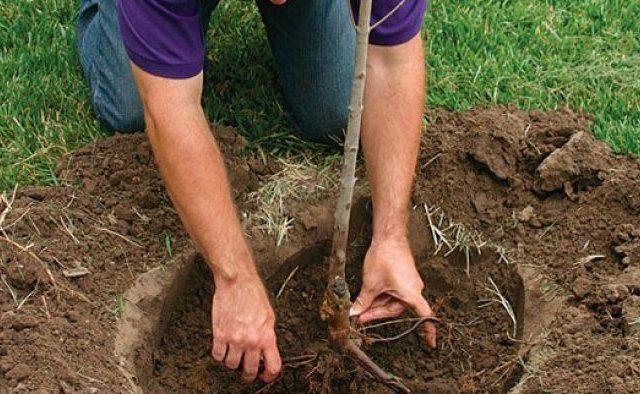
Revna should be planted in such a way that the distance between it and other trees is at least 3 meters.
Pollinators
The variety is considered self-fertile, but the yield is low, subject to self-pollination. If there are no pollinators, then the yield will be only 5% of the possible.
It is better to plant 2-3 other varieties of cherries next to this species, in this case, in the future, the likelihood of a bountiful harvest will become much higher.
The best pollinators for Revna cherries:
- Ovstuzhenka.
- Tyutchevka.
- Raditz.
- Iput.
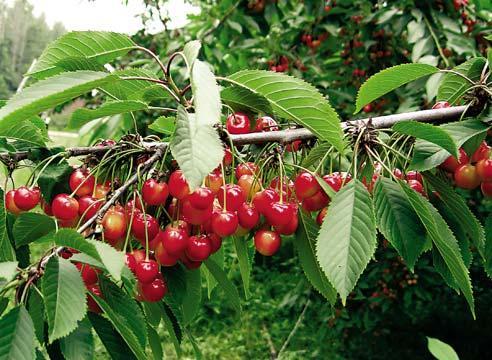
Cherry blossoms in the second decade of May. During this period, the plant should be sprayed with a weak solution of honey to attract pollinating insects.
Tree care
Compliance with the rules of agricultural technology will contribute to the fact that the tree will delight with a good harvest.
Feeding cherries
Trees of this variety need additional fertilization. Top dressing is carried out three times throughout the season. Cherry Revna is fed by adding humus to the region of the periosteal circle once every 2 years. When the kidneys swell, they are poured with a urea solution (8 g per 10 l of water).
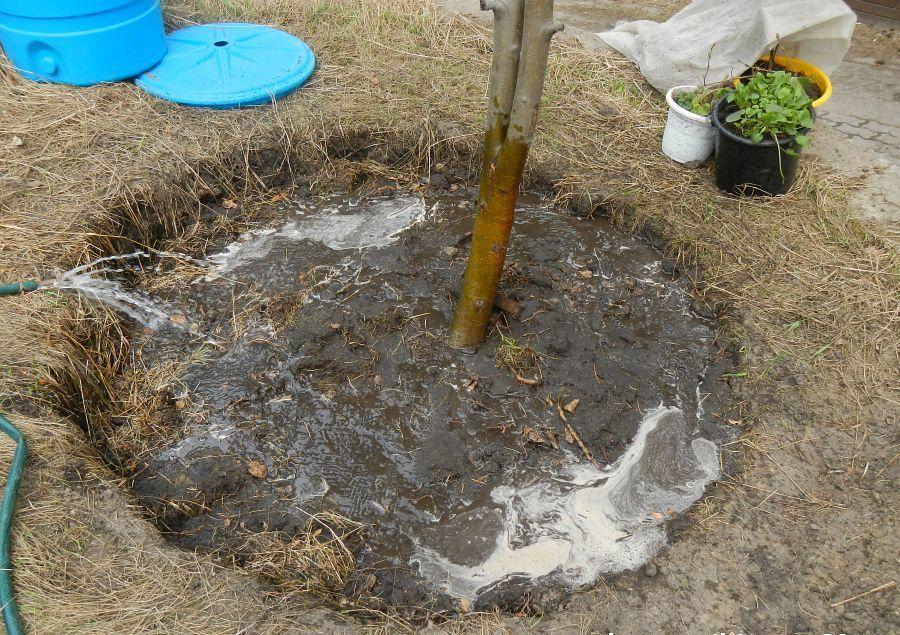
During the formation of fruits - with a solution of superphosphate (30 g of substance per 10 liters of conclusions, you can add 1 glass of wood ash). In the first month of autumn, they also fertilize with superphosphate, add fertilizers containing potassium (40 g of substance per 1 square meter of humus when digging a trunk circle).
Watering
Despite its general unpretentiousness, sweet cherries need sufficient watering. The soil should be moist, but not excessively. Watering trees is necessary 2-3 times throughout the month. In a dry season, the number of waterings is increased up to 4 times. The seedling is watered directly into the periosteal circle.
Shallow grooves are dug around adult trees along the perimeter, into which water is poured.
Loosening of the soil is carried out before moistening it. It is carried out to a depth of about 15 cm. It allows you to destroy weeds and break up the crust formed on the ground. If the ground is covered with mulch, then it is removed before loosening, and at the end of the procedure, it is returned to its place.
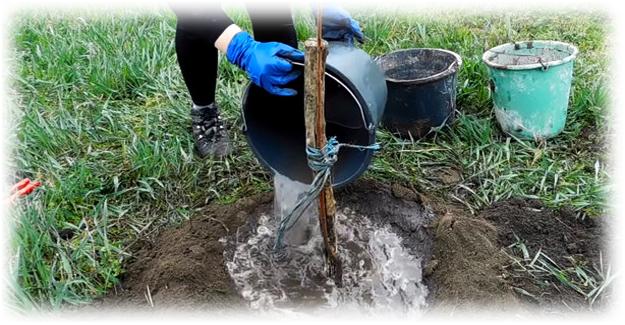
Cherry pruning
In the second year after planting in the ground, the first pruning is carried out.
Trimming is carried out as follows:
- Young shoots are shortened by 2/3 of the total length.
- It is imperative to remove broken or damaged branches. Then pruning should be done annually, since this species is prone to intense shoot growth.
The places where the branches were cut must be treated with garden varnish.
Preparing for winter
Cherry variety Revna tolerates winter well. Tree branches almost never freeze. However, the plant should still be prepared for the arrival of cold weather. In autumn, the trunks of cherries need to be whitened.
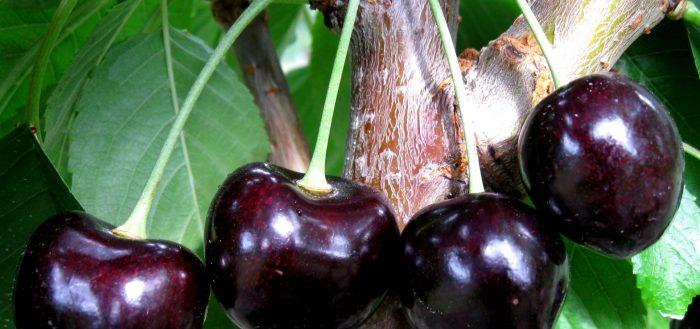
The trunk circle is covered with a sufficient layer of peat. This will help protect the root system from freezing. The lower part of the stem should be wrapped in a special mesh or any non-woven material. This will prevent rodents from damaging the trunk.
Pests and diseases of the variety
Cherry can be damaged not only by insects, but also by birds that peck at ripe fruits. To scare them away, a protective mesh is used to cover the crown. There are special scarers on sale.
You can also use for this purpose and improvised means (empty plastic bottles, tinsel), which are hung on trees.
Revna is very resistant to the majority of diseases typical for sweet cherries. However, the tree is susceptible to some damage:
- Chlorotic ring spot. This disease can destroy up to 50% of the total sweet cherry crop. To prevent the disease, you should regularly remove weeds near the tree, as well as eliminate aphids.
- Gum therapy (gommosis). The disease is non-infectious and manifests itself under adverse conditions. Drops of liquid appear at the cut site. With chronic homoses, the plant may die. To get rid of it, it is enough to immediately process the branch cut point.
- Milky shine. The disease affects branches and leaves; over time, yellow mushrooms grow on the bark. In the absence of proper treatment, the plant dies. It is urgent to remove the affected branches, treat the cut site with pitch or vitriol solution. If mushrooms have already appeared on the bark, then the tree is removed from the site.

For the prevention of diseases in the spring, before the buds swell, the plant is sprayed with a solution of copper sulfate. After flowering, the plant is sprayed with Bordeaux liquid. The second time such spraying is carried out after 2 weeks.
The most dangerous pests:
- The cherry elephant is a bug that affects both cherries and cherries to the same extent. To prevent infection, you need to regularly dig up the soil in the periosteal circle. This helps to get rid of the larvae. Also, the tree is treated with suitable chemicals with insecticidal properties during the period of bud swelling.
- Cherry fly. To get rid of, treat the plants with a decis solution. It is necessary to treat with insecticides at a temperature of + 18 degrees, then the procedure is repeated every 10 days. Stop processing 2 weeks before harvest.
- California scale insect. These insects are able to suck sap from tree shoots.
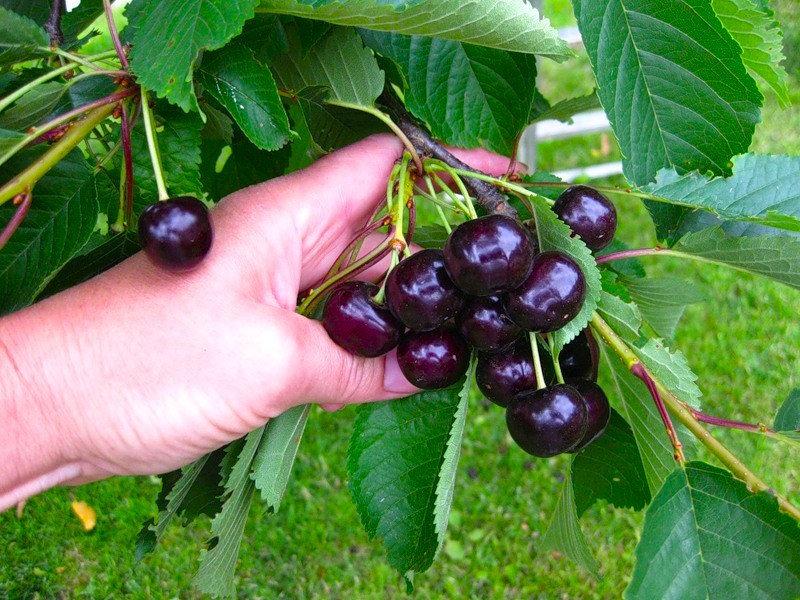
To avoid possible damage, you can spray the sweet cherry with universal preparations for all stone fruit trees. This is done before flowering and again, if necessary, after it.
Harvesting
Cherry Revna refers to late ripening. Fruits ripen late. The dense skin reliably protects ripe fruits from damage, however, in order to preserve the crop and its possible transportation, it is better to remove them together with the stalk. It is advisable to store at a temperature not exceeding 0 degrees in a container of no more than 5 kg.
Not only a scientific description of the variety, but also numerous positive reviews from gardeners indicate that Revna cherry is a good choice for a garden.

